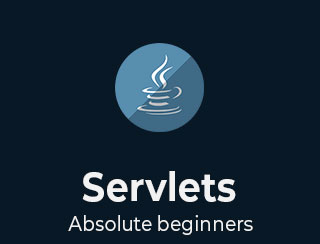
- Servlets Tutorial
- Servlets - Home
- Servlets - Overview
- Servlets - Environment Setup
- Servlets - Life Cycle
- Servlets - Examples
- Servlets - Form Data
- Servlets - Client Request
- Servlets - Server Response
- Servlets - Http Codes
- Servlets - Writing Filters
- Servlets - Exceptions
- Servlets - Cookies Handling
- Servlets - Session Tracking
- Servlets - Database Access
- Servlets - File Uploading
- Servlets - Handling Date
- Servlets - Page Redirect
- Servlets - Hits Counter
- Servlets - Auto Refresh
- Servlets - Sending Email
- Servlets - Packaging
- Servlets - Debugging
- Servlets - Internationalization
- Servlets - Annotations
- Servlets Useful Resources
- Servlets - Questions and Answers
- Servlets - Quick Guide
- Servlets - Useful Resources
- Servlets - Discussion
- Selected Reading
- UPSC IAS Exams Notes
- Developer's Best Practices
- Questions and Answers
- Effective Resume Writing
- HR Interview Questions
- Computer Glossary
- Who is Who
Servlets - Online Quiz
Following quiz provides Multiple Choice Questions (MCQs) related to Servlets Framework. You will have to read all the given answers and click over the correct answer. If you are not sure about the answer then you can check the answer using Show Answer button. You can use Next Quiz button to check new set of questions in the quiz.

Q 1 - Which of the following is the correct order of servlet life cycle phase methods?
A - init(), service(), destroy()
B - initialize(), service(), destroy()
Answer : A
Explaination
The servlet is initialized by calling the init () method. The servlet calls service() method to process a client's request. The servlet is terminated by calling the destroy() method.
Q 2 - Which of the following is true about destroy() method of servlet?
A - After the destroy() method is called, the servlet object is marked for garbage collection.
B - The servlet is terminated by calling the destroy() method.
Answer : C
Explaination
The servlet is terminated by calling the destroy() method. After the destroy() method is called, the servlet object is marked for garbage collection.
Q 3 - Which of the following code retrieves the body of the request as binary data?
Answer : C
Explaination
request.getInputStream() retrieves the body of the request as binary data using a ServletInputStream.
Q 4 - Which of the following code retrieves the Internet Protocol (IP) address of the client that sent the request?
Answer : A
Explaination
request.getRemoteAddr() returns the Internet Protocol (IP) address of the client that sent the request.
Q 5 - Which of the following code retrieves the fully qualified name of the client making this request?
Answer : A
Explaination
request.getRemoteHost() returns the fully qualified name of the client that sent the request.
Q 6 - Which of the following code can be used to send an error response to the client using the specified status code and error message?
A - request.sendError(statusCode,message)
B - response.sendError(statusCode,message)
Answer : B
Explaination
response.sendError(statusCode,message) sends an error response to the client using the specified status code and error message.
Q 7 - Which of the following are valid servlet filters?
Answer : D
Explaination
All of the above filters are suggested by the servlet specifications.
Q 8 - Which of the following is true about javax.servlet.error.message?
Answer : A
Explaination
javax.servlet.error.message attribute gives information exact error message which can be stored and analysed after storing in a java.lang.String data type.
Answer : B
Explaination
HTTP is a stateless protocol which means each time a client retrieves a Web page, the client opens a separate connection to the Web server and the server automatically does not keep any record of previous client request.
Q 10 - Which of the following code is used to get language name in servlets?
A - response.getDisplayLanguage()
B - Locale.getDisplayLanguage()
Answer : C
Explaination
request.getDisplayLanguage() returns a name for the locale's language that is appropriate for display to the user.
